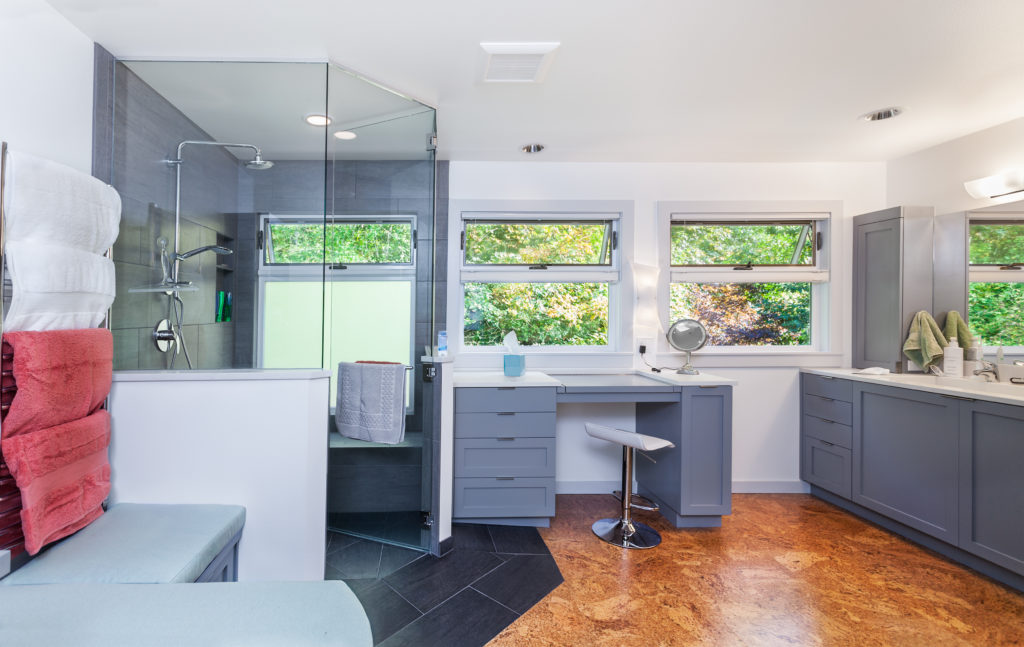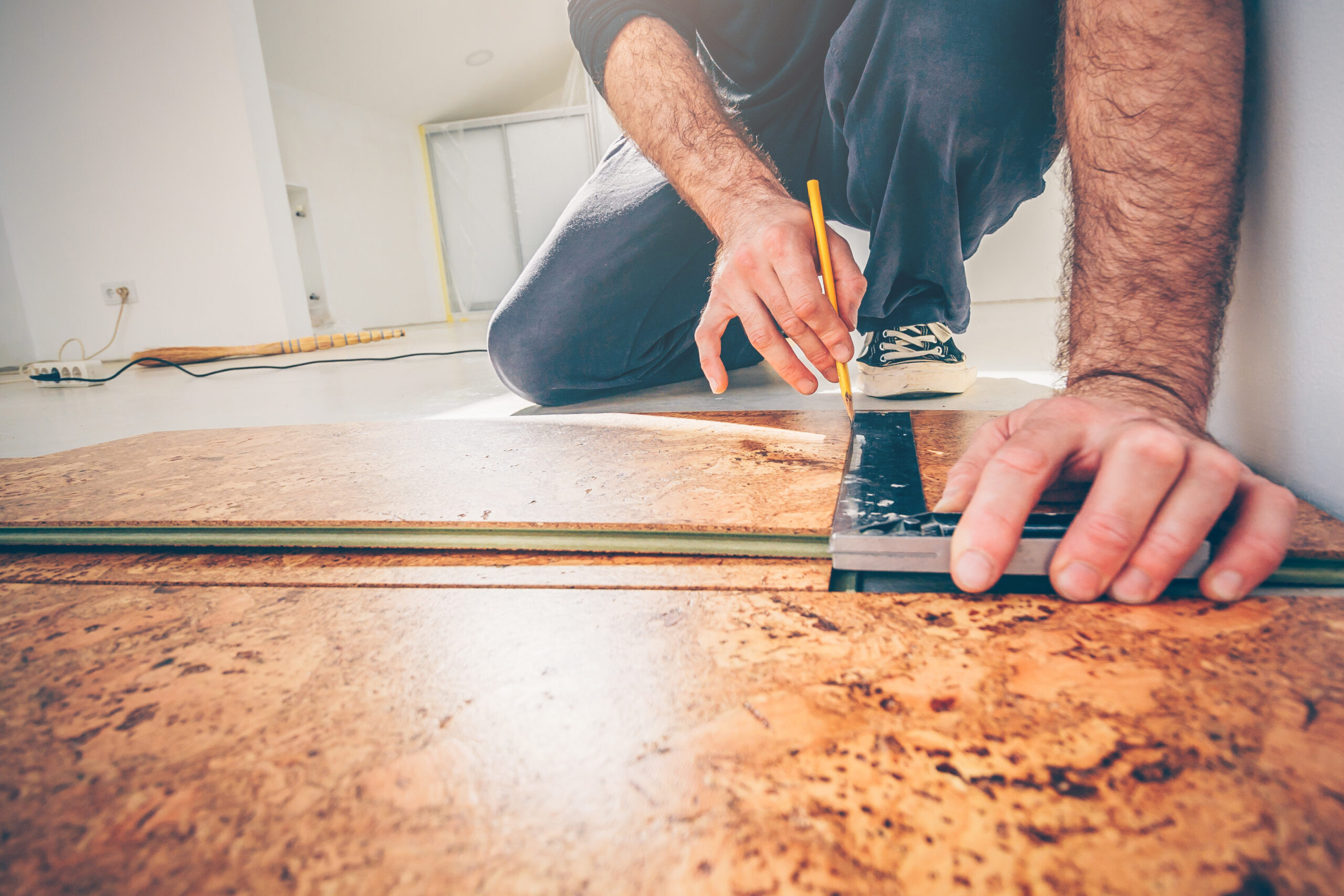Can You Put Cork Flooring Over Heated Floor?


Sam Willis
Sam Willis is an esteemed BPA Advisor and Editor specializing in Restoration & Remodeling. As a dedicated writer, Sam takes pride in sharing his extensive knowledge and expertise in residential and commercial construction, as well as restoration & remodeling. Sam plays a crucial role in offering valuable insights that shape the discourse around innovative construction practices and materials.
Cork flooring isn't anything new; it's actually been rising in popularity thanks to the fact that it's environmentally friendly. So due to its sustainability, more homeowners are after this flooring.
When you look right at the light brown hue of the flooring, it seems quite warm, right? While all shades of cork offer that neutral tone, there's one question that still pops up, and that's, "Can you put cork flooring over the heated floor?"
So, is this something that's suitable for your radiant flooring heating system? While cork flooring is a fabulous insulator, thanks to its thickness and other qualities, it's important to look into some factors.
Let's dive into cork flooring over heated floors and see whether or not it's suitable.
Can You Install Cork Floors Over Radiant Heating System?
Yes, you can install cork flooring on top of a heated floor. However, for safety reasons, it's going to be strongly recommended to allow a professional to do the installation instead.
This is due to the fact that cork flooring (or nearly all flooring types) should be installed over a radiant heating system that has been encased with cement or some other leveling compound.
This is needed as it's going to keep your flooring safe from fires (in the case of an electrical shortage) or water damage.
Is it Necessary to Install Cork Flooring Over a Heated Floor?

One of the biggest benefits of cork flooring is the fact that it's a natural insulator. While it can take a while for cork flooring to heat up, once it's heated, it's able to spread the heat out evenly, and it's able to continuously insulate even once the heat is off.
In general, since cork has natural insulation properties, the flooring is going to feel warm to the touch even after hours of the heating system being off.
Just by adding cork to the space alone, you can count on the temperature rising in the room by 8 to 13 degrees Fahrenheit. This can be perfect for small spaces.
Is it Possible to Install a Cork Floor Without a Professional?
While you technically could do the installation yourself, this is something that's still strongly recommended to leave to a professional only for the sake that electrical shortages create the risk of a fire, but even water damage can happen depending on the floor heating system. But it doesn't immediately mean it's impossible to install yourself. There are varieties of cork flooring out there that are available to customers if they prefer to save some money and go the DIY route.
Some of these varieties even offer easy installation, as these will lock together in place rather than needing adhesives like glue. But there are cork flooring types out there that need to be glued down if that's the route you want to go. While these will require some special tools and time (unlike the ones that lock in place), these can look great as well but will need special attention and preparation for the subfloor.
Is There a Specific Type of Cork That Needs to Be Installed?
The type of cork flooring that should be used on top of radiant heating systems is known as a floating floor. These are not affixed to the subflooring but instead are snapped or glued together. So, why does this work so well with heated floor systems? Well, there are two reasons for this; for starters, it's going to help prevent any punctures in your heating system (making installation easier).
Second of all, the cork flooring is able to contract and expand naturally as the temperatures change. It's primarily recommended not to use adhesives for the cork flooring, such as glue, as this not only takes time and special tools, but the adhesives may be sensitive to the heating, causing them to peel off.
Is it Possible to Install Cork Flooring On Top of the Existing Ceramic Tile Floor?
It is possible to install cork flooring on top of ceramic tiles, but the ceramic tiles need to be firmly attached.
This includes not having any cracks and ensuring that it's entirely stable. Ceramic tile floors are non-absorbent, so if there is any soiling, such as wax, grease, soap, etc., then these need to be removed by cleaning them on the service.
Plus, if there are any loose tiles, they'll need to be fixed up. So homeowners with ceramic tile floors can easily install floating cork floors on top of the ceramic tile and can still get the benefits of a heated floor.
What is the Typical Installation for Cork Flooring?

It's going to depend on whether you go for a DIY route or hire a professional, but usually, you can count on these being done within two installation methods. It usually goes by planks or tiles being glued down, or it's the floating method for installation. When it comes to the installation process, there isn't a design-to-match process.
What is the Maximum Heating Temperature?
When it comes to the maximum temperature that cork flooring can withstand, it's strongly recommended not to go above 85 degrees Fahrenheit or 29 degrees Celsius.
What Should You Keep in Mind to Ensure Proper Installation?
Before you begin installing the cork flooring, you're going to first need to talk a look at your heating system. This needs to be in operation for at least two weeks prior to you installing the cork flooring. Why? This is to help ensure that any potential moisture or residue from the cement compound has already been evaporated.
After the two weeks are up, the cork flooring will need to acclimatize within the space prior to the installation. This usually takes 48 hours, and the heating should be around 65 to 72 degrees Fahrenheit or 18 to 23 degrees Celsius. This also includes the cartons of flooring, as these will need to be opened (but not spread) as these will also need to acclimatize too.
Get Smarter About Building Products
Join 50,000+ subscribers and get our 3 min daily newsletter on what matters in the building materials industry.
You might like this


Solving Ventilation Challenges: Metal Deck Profiles and Back Draft Dampers as Key Solutions
When it comes to building design and construction, ventilation is a critical factor that often presents significant challenges. Proper ventilation is essential for maintaining indoor air quality, controlling temperature, and ensuring occupant comfort and safety. In this article, we will explore how metal deck profiles and back draft dampers are key solutions for addressing ventilation […]


The Ultimate Guide to Home Insulation
When it comes to creating a comfortable and energy-efficient home, insulation plays a pivotal role. Proper insulation helps regulate indoor temperatures, reduces energy consumption, and enhances overall comfort. In this comprehensive guide, we’ll explore various aspects of home insulation, including the best types of insulation for different areas of your home and key considerations for […]


The Best Hidden Deck Fasteners: Concealed Elegance and Lasting Stability
Decks, those quintessential outdoor havens, serve as extensions of our living spaces, inviting us to bask in the open air. But what if we could take this experience to the next level? Enter concealed deck fasteners, the unsung heroes that elevate your deck’s appearance and structural integrity, all while keeping their existence a secret. In […]